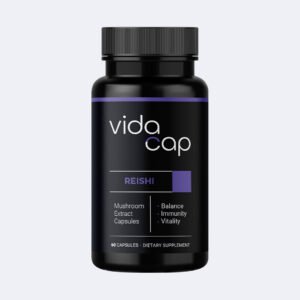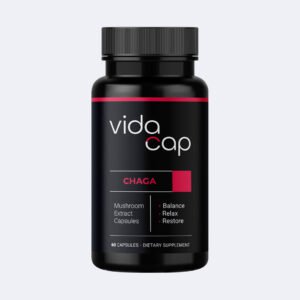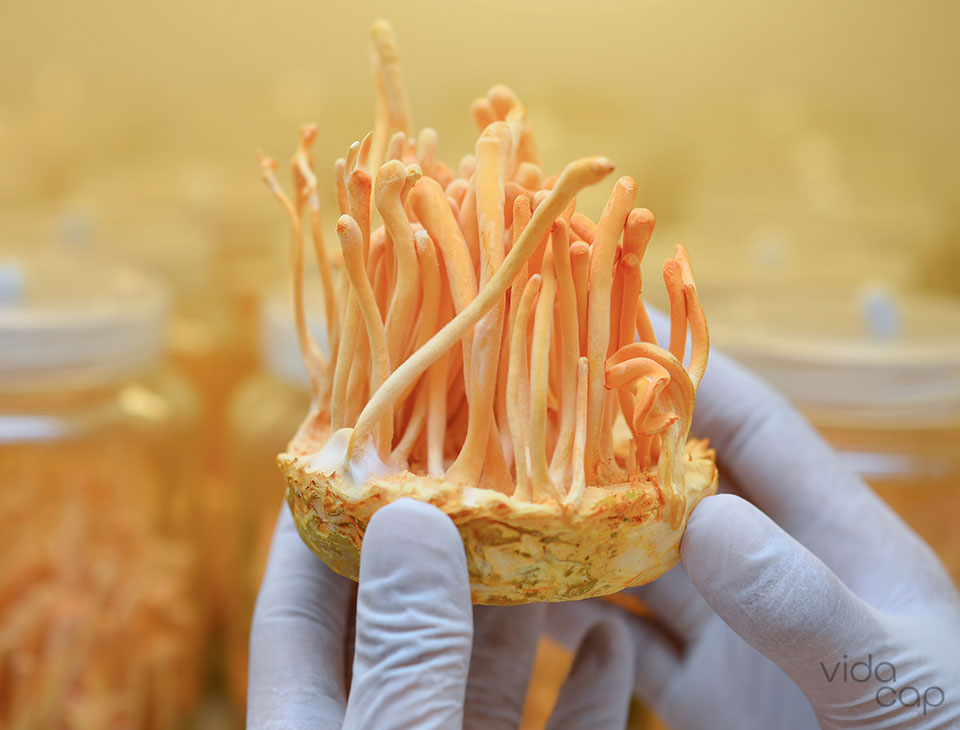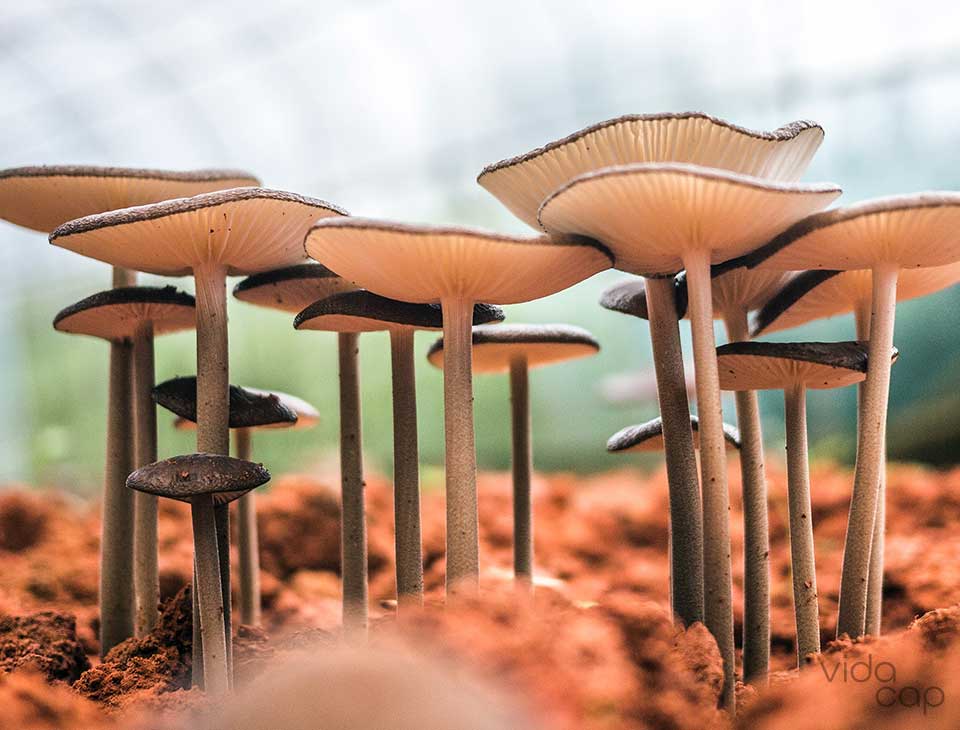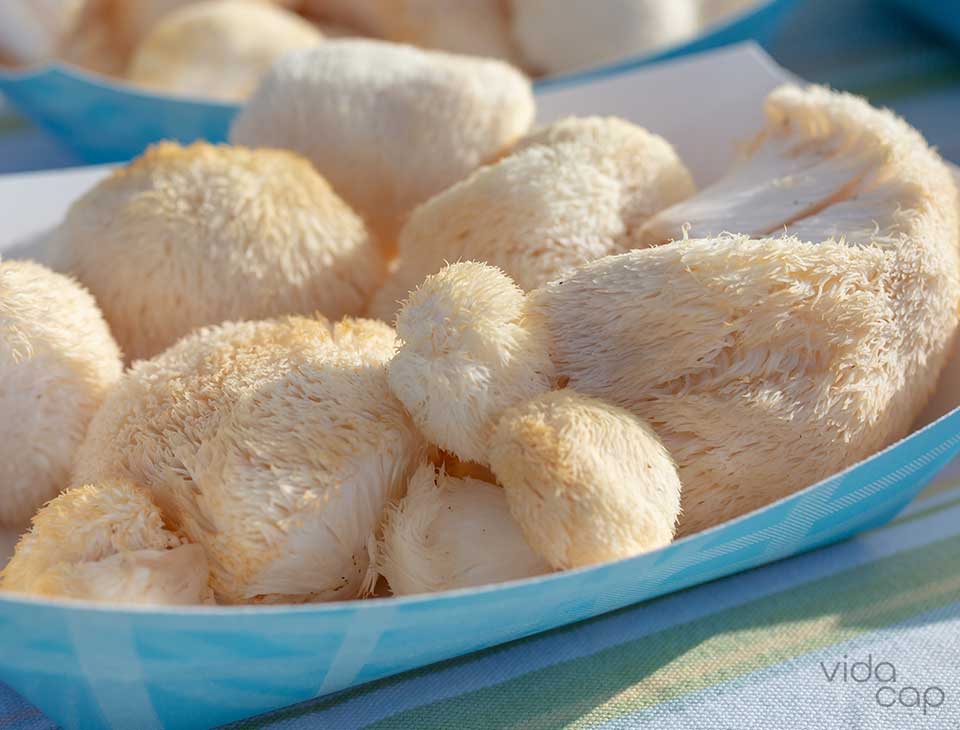
Amanita Muscaria vs. Amanita Pantherina: What You Need to Know
 Audrey Ferguson |
Updated on: September 27, 2023
Audrey Ferguson |
Updated on: September 27, 2023
Amanita muscaria and Amanita pantherina are two closely related mushrooms containing the psychoactive compounds ibotenic acid and muscimol. The two species have some similarities but also some significant differences. Here’s what you need to know.
What Is Amanita Muscaria?
Amanita muscaria, or fly agaric, is the red and white spotted mushroom often seen in popular culture representation of mushrooms.
It has been portrayed in artwork and fiction countless times throughout history and has associations with magic and mysticism. It also has links with shamanism due to its dreamlike, visionary effects. However, it must be correctly prepared to avoid unpleasant side effects.
This is due to the mushroom’s complex chemistry, which includes the active compounds muscarine, muscimol, and ibotenic acid. Muscimol and ibotenic acid are primarily responsible for Amanita muscaria’s famous effects.
What Is Amanita Pantherina?
Amanita pantherina, or the panther cap, is similar to Amanita muscaria in appearance. However, its cap is a muted shade of brown rather than vivid red. Like Amanita muscaria, it contains muscimol and ibotenic acid and has comparable effects. However, it is even more potent.
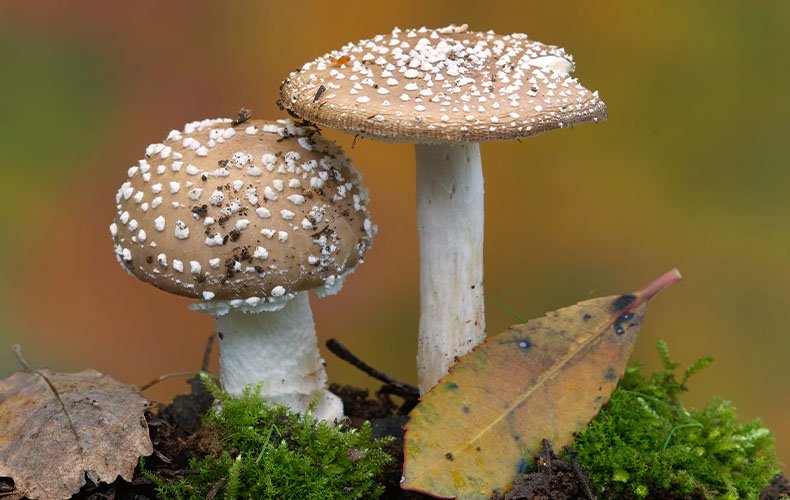
Amanita pantherina is a European mushroom and should not be confused with Amanita pantherinoides, the western panther, which is native to the United States. The two were initially thought to be the same species, and their names are often used interchangeably. However, there are some subtle genetic differences between the two. That said, their chemical makeup and effects are similar.
We will use the term Amanita pantherina throughout this article as it is more widely used and understood. The information applies to both Amanita pantherina and Amanita pantherinoides.
Effects on the Body and Psyche
Both Amanita muscaria’s and Amanita pantherina’s effects on the body and psyche are due to the presence of muscimol and ibotenic acid. Therefore, they are somewhat similar.
However, these effects will vary slightly depending on the ratio of active chemicals in the mushrooms, their potency, and how they are prepared. The unique physiology and psychology of the individual taking them are also likely to have an impact.
Amanita Muscaria
Amanita muscaria’s effects can be broadly categorized as physical and psychological and include the following:
Physical Effects:
- Headaches
- Dizziness
- Disorientation
- Nausea and vomiting
- Diarrhea
- Uncoordinated movement
- Muscle twitches
- Excess salivation
- Sweating
- Drowsiness
- Inability to stay awake
Psychological Effects:
- Visual and auditory hallucinations
- Sense of introspection
- Distorted sense of reality
- Time loops
- Repetitive thoughts
- Shifts between positive and negative moods
- The feeling of having died or being dead
- Out-of-body experiences
- Vivid or lucid dreams
- Increased sense of spirituality
These effects tend to begin within an hour of ingestion and continue for 3-4 hours, with residual effects lasting as long as 10 hours.
Amanita Pantherina
Amanita pantherina has similar effects to Amanita muscaria because it contains the same active compounds. However, it has a different muscimol to ibotenic acid ratio and tends to be even more potent.
One study showed that Amanita muscaria caps contained 46-1052 parts per million (ppm) muscimol and 10-2845 ppm ibotenic acid. In comparison, Amanita pantherina caps contained 1554-1880 ppm muscimol and 188-269 ppm ibotenic acid. This suggests that there is less variability in potency in Amanita pantherina caps and that they are more likely to be rich in muscimol.
This is relevant because muscimol and ibotenic acid have very different effects on the nervous system, as discussed below.
Effects on the Nervous System
Muscimol and ibotenic acid are the chemicals responsible for Amanita muscaria’s and Amanita pantherina’s effects. They affect the central nervous system by mimicking the action of two neurotransmitters, GABA and glutamate.
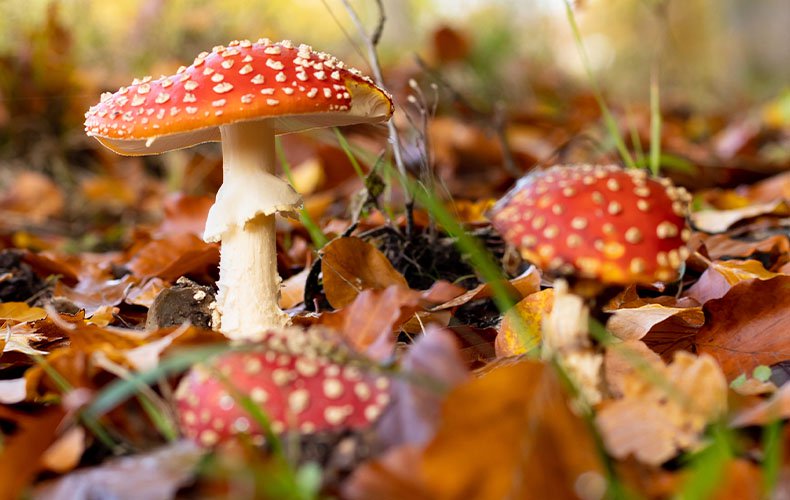
Muscimol has a similar molecular shape to GABA, an inhibitory neurotransmitter. It slows signals in the nervous system, causing relaxation and drowsiness and inducing sleep. It is also thought to have potential neuroprotective effects.
Meanwhile, ibotenic acid has a similar molecular shape to glutamate, an excitatory neurotransmitter. It speeds up signals in the nervous system and has stimulating effects. It is also thought to be neurotoxic in high doses, although whether this is relevant to humans consuming small quantities by mouth is unclear.
Amanita Muscaria
Amanita muscaria’s effects on the nervous system depend on the mushrooms’ muscimol and ibotenic acid ratio. Fresh mushrooms are rich in ibotenic acid, and preparing them in a specific way increases their muscimol content.
This process is known as decarboxylation and involves exposing the mushrooms to heat, acidic conditions, or high pressure. Many amanita experts recommend preparing Amanita muscaria mushrooms before use to increase their safety and decrease the risk of side effects. You can read more about the process in our article about preparing Amanita muscaria here.
Amanita Pantherina
Like Amanita muscaria, Amanita pantherina’s effects will depend upon the mushrooms’ muscimol to ibotenic acid ratio and preparation method. However, since Amanita pantherina tends to be more potent, its effects on the nervous system are more intense.
One study suggested that Amanita muscaria contains more ibotenic acid, while Amanita pantherina contains more muscimol. Its results showed that Amanita muscaria intoxication is more likely to cause confusion and agitation, while Amanita pantherina intoxication is more likely to lead to comatose states.
It is unclear whether these results apply to prepared or unprepared mushrooms. Either way, Amanita pantherina mushrooms are incredibly potent and should be approached with caution.
Amanita Muscaria vs. Amanita Pantherina: Final Thoughts
Amanita muscaria and Amanita pantherina are two mushrooms with similar chemistry and effects. However, Amanita pantherina is far more potent than Amanita muscaria and is more likely to cause unpleasant side effects.
Although both mushrooms should be used responsibly, Amanita pantherina should be approached with additional care. To ensure a safe and enjoyable experience, thoroughly research the possible effects and side effects and start with a minimal dose.
-
new
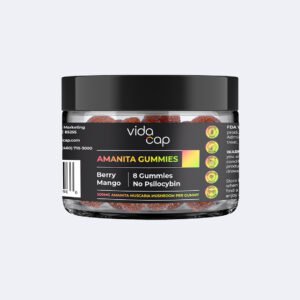 Amanita Muscaria Mushroom GummiesCalm | Mindfulness | Balance$38 Shop now
Amanita Muscaria Mushroom GummiesCalm | Mindfulness | Balance$38 Shop now- Experience a calming and balancing buzz effect.
- 8 Delicious Berry-Mango and Citrus gummies
- 500mg amanita extract per gummy for best results
- Proudly vegan and gluten-free
- Manufactured in the USA with high-quality standards

Audrey has worked as a registered dietitian for 6 years. She graduated from the University of Florida in 2013 with a Bachelor of Science degree. In 2014 she began an internship with the Veterans Affairs Healthcare System, and was hired as an Outpatient Dietitian following graduation. She started her career counseling a variety of patients with different health concerns and disease states. After a few years into practice, she found her passion was working in cancer care, and has spent the last 4 years specializing in oncology nutrition.
In her practice, Audrey has spent a significant amount of time reviewing literature on herbal and dietary supplements in the cancer care setting. Through her work at Vidacap, she hopes to continue to expand her knowledge and understanding of the benefits of supplements in conjunction with promoting a healthy, balanced diet and management of overall health and well being.
Lynn Marie Morski
Reviewed by Lynn Marie Morski, MD, JD, who is a president of the Psychedelic Medicine Association and host of the Psychedelic Medicine Podcast. She sits on the advisory boards of Psychedelics Today, Cybin, VETS, Inc (Veterans Exploring Treatment Solutions), the Oxenberg Foundation, and the Ketamine Task Force.
Read More

 by Lynn Marie Morski, MD
by Lynn Marie Morski, MD
